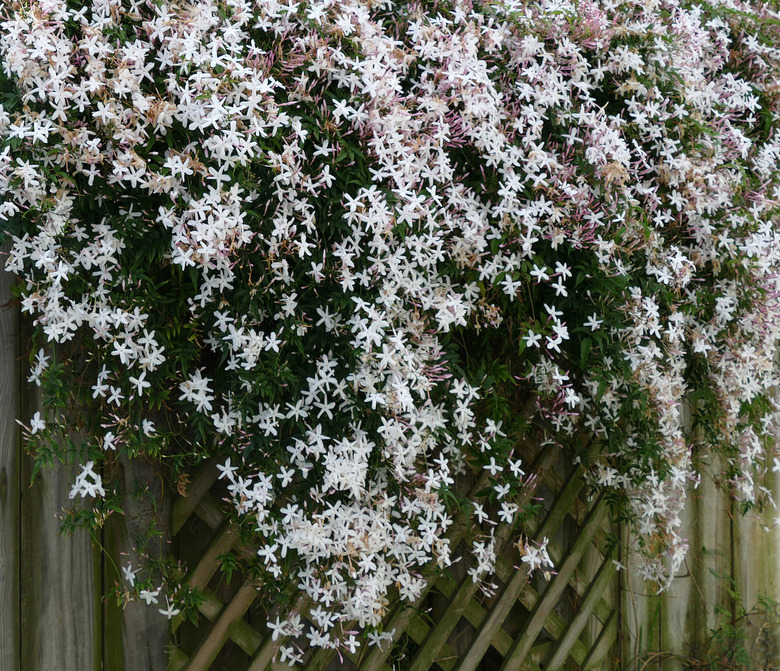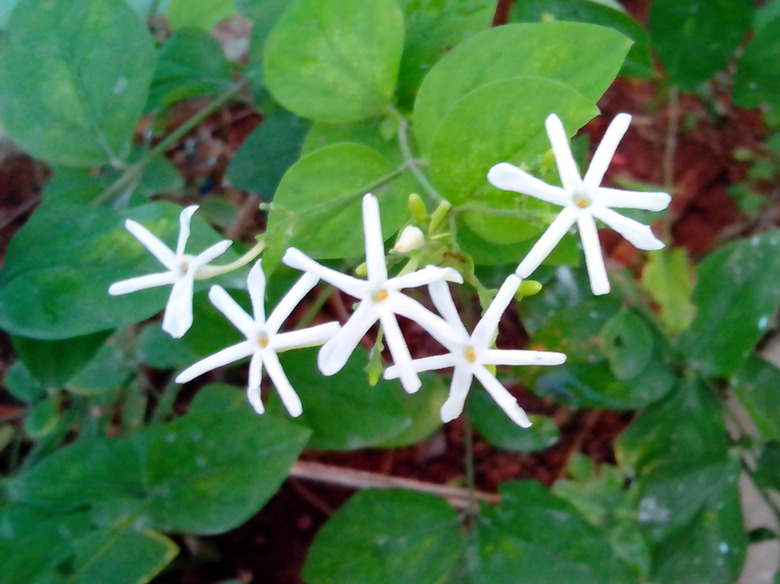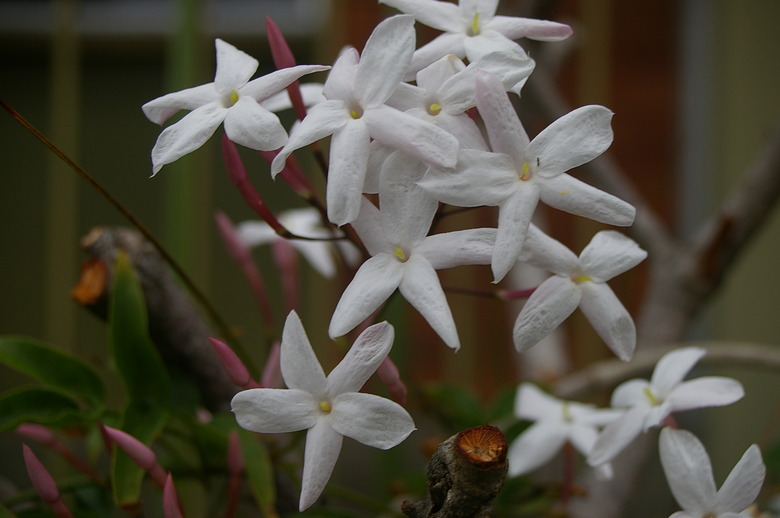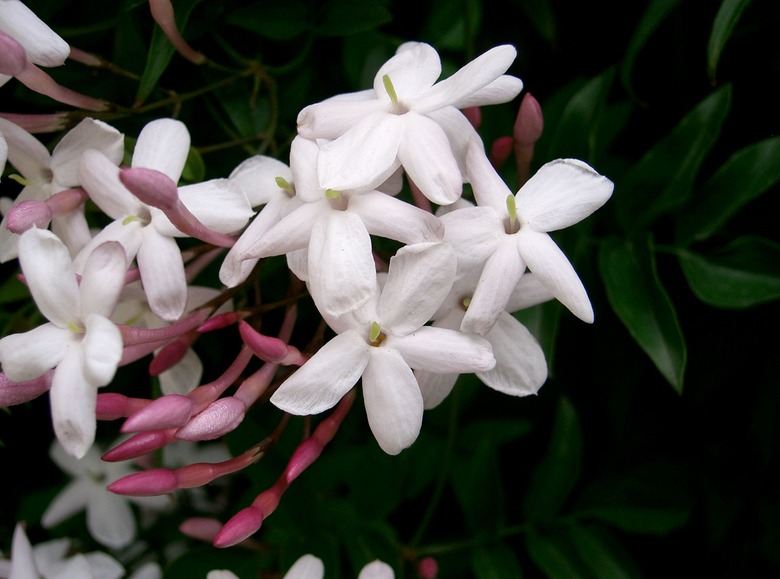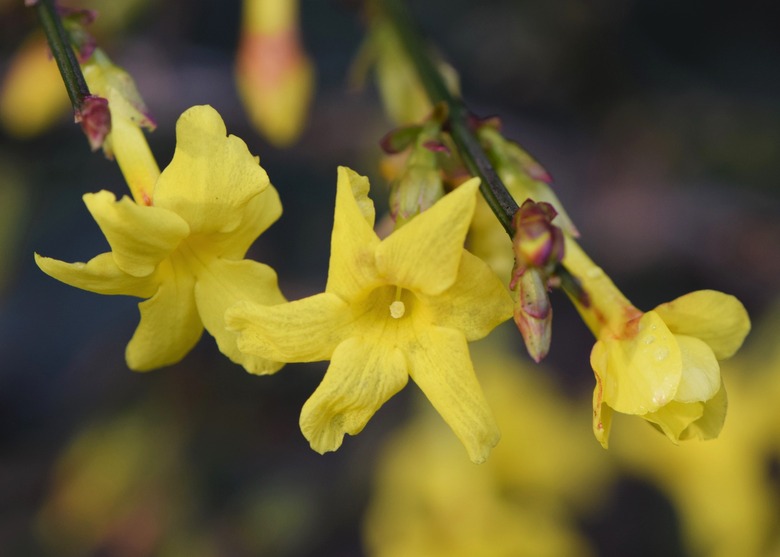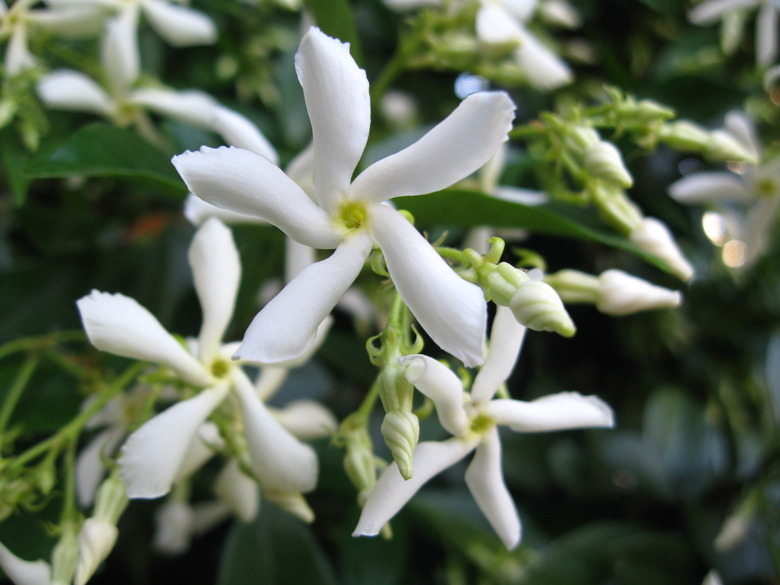Jasmine Plant: Habitat And Growing Requirements
Where Does Jasmine Grow Best?
If you want to know the ideal environment for the jasmine plant, you'll have a tough time narrowing it down. The plants commonly known as jasmine comprise multiple species in the Jasminum genus, along with a vine that is not a true jasmine at all in an entirely different genus, confederate jasmine (Trachelospermum jasminoides).
However, most jasmine plants are climbers and like warm weather.
Types of True Jasmine Plants
There are more than 200 species of true jasmine plants in the Jasminum genus. Some are evergreen, while some are deciduous; some are trees or shrubs, and some are vines.
Jasmine plants are prized for their marvelous, fragrant flowers shaped like stars. The jasmine flowers of two species are most often used in perfumes: Jasminum sambac (zones 9 to 11), also called Arabian jasmine, and Jasminum grandiflorum (zones 8 to 10), called poet's jasmine.
Tip
The most popular jasmine vines most likely to be available in nurseries are common jasmine, pink jasmine and winter jasmine.
Common Jasmine
Common jasmine (Jasminum officinale), also called hardy jasmine, is an evergreen vine that can grow quite large given the right conditions—up to 40 feet long with a 15-foot spread. Grow this vine outdoors in USDA zones 7 to 10; if you live in colder zones, grow it as an indoor plant.
Pink Jasmine
Confusingly, pink jasmine (Jasminum polyanthum) grows in zones 8 to 11 and might also be called winter jasmine, although the latter term is more commonly applied to the species J. nudiflorum. These vines can reach 20 feet long, featuring white flowers that are star-shaped. New buds flush pink.
Winter Jasmine
Winter jasmine (Jasminum nudiflorum) is the hardiest of the jasmines, able to grow in USDA zone 6 and warmer. This plant is more like a shrub than a vine, growing 3 to 4 feet tall and 4 to 7 feet wide.
True Jasmine Requirements
All true jasmine plants require full sun to grow their best, or at the least, bright light; given that these are plants native to tropical or subtropical areas, this is not surprising. When grown in partial shade, they produce more foliage and fewer flowers.
While jasmine plants require moist, well-draining soils, they don't mind poor soil. Also, they don't require a highly fertile environment and need little or no fertilizer.
When choosing a planting site, be sure you know which variety you have and how large it will get. Most jasmine plants require a trellis or fence or some other type of support.
Jasmine plant care is relatively minimal. If you want to control the size of the plant, prune it after it flowers. Be aware when pruning that jasmine plants do not flower on new growth produced during the current season; instead, they flower on the previous year's growth. Don't prune after buds have set in the late fall or early spring if you want to have flowers.
Confederate or Star Jasmine
While not a true jasmine, the confederate jasmine (Trachelospermum jasminoides, USDA hardiness zones 7 to 10) is a highly prized vine sporting golden yellow flowers with deep green leaves. It can be grown as a groundcover if it is not trained on a trellis. Some gardeners also grow it as a houseplant.
